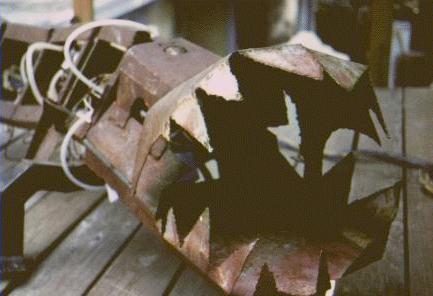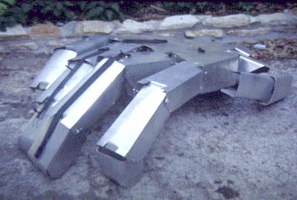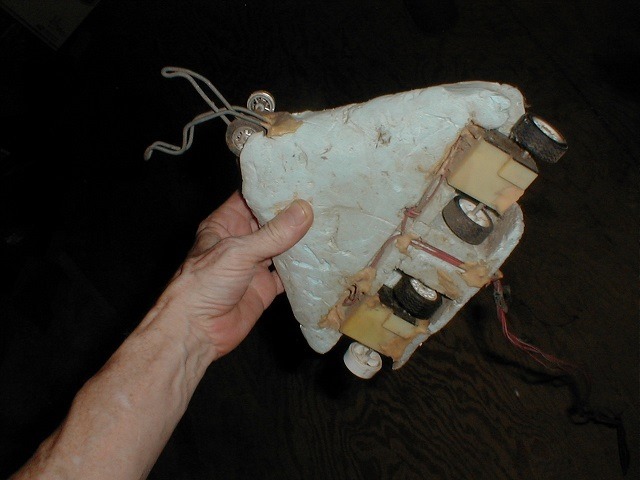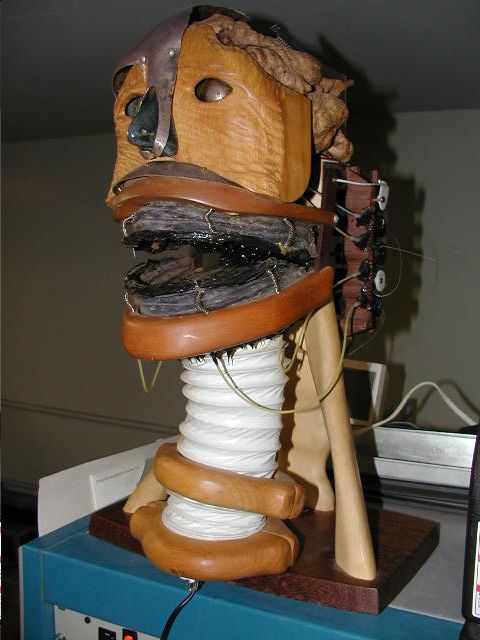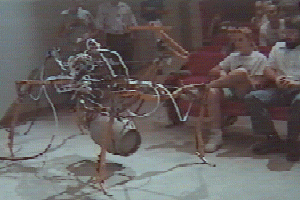The pit bull has a nasty reputation as a cruel and vicious breed. In Austin, TX, there lives the Mechanical Pit Bull, a beast so ferocious and fierce that even the most stout-hearted bull terrier would flee in terror.
The Mechanical Pit Bull, a nightmarish dog-like contraption, some six feet long, is built from heavy-duty welded and bent pieces of sheet metal. It twists about, thrashing its jagged-edge legs and jaws, and its thick electro-pneumatic torso.
As it moves, the metallic sound of its grinding, metal legs and the hissing from the compressed air create an eerie atmosphere for this robotic entity. No one dares to challenge this beast. No one, that is, except Brooks Coleman.
Brooks, a founding member of The Robot Group and the creator of the Mechanical Pit Bull, often wrestles with his creation in dangerous displays of man vs machine.
Has the Mechanical Pit Bull ever bitten the hand that feeds it? “Yes. Many times,” according to Brooks who used to have a lot more hair.
Note 1 : There is some evidence that the Mechanical Pit Bull evolved from the Centipede that appeared at RoboFest 1 (1989).
Note 2 : It is unclear, at the moment, whether the Mechanical Pit Bull appeared at the Cyberspace Convention, hosted by The Robot Group (1990); however, it did appear at RoboFest 2 (1991).
The background material for this page is derived from an archived page on the Internet Archive Wayback Machine. Some links may have been added, removed, or updated.
